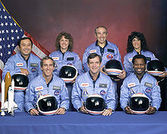
 In memory of the 7 crew members who perished on the space shuttle Challenger 25 years ago today (28 January 1986). Referring to picture: STS-51-L crew (front row) Michael J. Smith, Dick Scobee, Ronald McNair; (back row) Ellison Onizuka, Christa McAuliffe, Gregory Jarvis, Judith Resnik.
1 Comment
 It is well known that ‘green house gases’, such as CO2 and methane, cause warming in the lowest layer (the ‘troposphere’) of the Earth’s atmosphere. However, it is less well-known that these same gases produce a cooling mechanism in the outermost layer (the ‘thermosphere’) where satellites orbit. It is believed that this cooling has the effect of steadily reducing the atmosphere’s density high up in the thermosphere, but is this happening, and if so what difference does it make? I have been collaborating with colleagues, in particular Dr Hugh Lewis and a graduate student Arrun Saunders, at the University of Southampton over the last few years to attempt to answer these questions. Arrun’s hard work, as part of a PhD programme, has recently confirmed the findings of other researchers in the field, suggesting that indeed the density in the upper atmosphere is declining by a few percent per decade. Why is this relevant? Well, the drag on orbiting satellites is directly dependent on the atmospheric density, so as the density decreases, then so does the drag. This in turn means that the orbital lifetime of satellites increase, which results in an increasing number of space debris objects on orbit. The international space-faring community need to wake up to this density trend in the high atmosphere where satellites (and space junk) orbit. If not taken account of in the development of debris mitigation guidelines, then the effectiveness of such guidelines will be compromised. Perhaps more importantly, as the community begins to consider the necessity of actively removing debris objects from orbit to stabilise the debris environment, the neglect of this trend in the operational planning will have a significant negative impact in achieving a beneficial outcome. 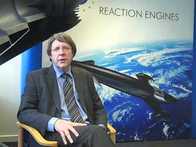 With the cancellation of the Ares 1 launcher (the space shuttle replacement), and the move to engage private industry in the establishment of the next generation of ‘man-rated’ launch vehicles, is it time for a step function in launcher technology? One private enterprise with an interesting proposal is Alan Bond’s Reaction Engines. The Skylon launcher is Alan’s brainchild, and is effectively a single-stage-to-orbit vehicle with aircraft-like operations (see picture gallery). Adopting such a vehicle as the shuttle replacement would be a very bold step, but it would certainly get us out of the rut of the multi-stage expendable configurations that have been with us for decades. Maybe it is time for such a bold solution to future access to orbit, but this particular promising initiative would probably suffer from the ‘not invented here’ syndrome in the USA. 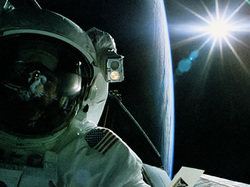 Wow … the UK media have just picked up what they think is hot news – the US space shuttle is about to retire, throwing the US human spaceflight programme into disarray. Oh well, a good story but one that’s been around for about a couple of years now! In about 2008, when the shuttle retirement became more of a reality, the news was not all bad as it forced a rethink of the US human spaceflight programme. This radical appraisal led to the birth of the Constellation programme, the development of the Ares launch vehicles, and a long-term vision of US leadership in human spaceflight towards a return to the moon and a crewed landing on Mars. However, with the incoming Obama administration, the whole vision has been sacrificed, with the cancellation of the Ares programme (see picture gallery), and an extension of the ISS in low Earth orbit to 2020. So now we have the bizarre situation of the US astronauts being dependent upon the Russians for access to orbit (and ISS in particular), and no long-term vision for human exploration of the moon and Mars. How did we get here?! It could be argued that spending huge sums on human space exploration at times of such financial stringency is foolish. However, as always, these things are not straightforward. Space programmes are not just about (apparently) wasting resources with little benefit to the man on the street – there are obviously financial and political dimensions. It’s all about jobs, and maintaining a trained, high-tech work force, to say nothing of the political objective of preserving US leadership in space. What will be the mood in the USA in a few years time when the next foot prints on the moon are Chinese? 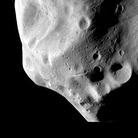 The European Space Agency comet-rendezvous spacecraft Rosetta has recently captured some lovely images of an asteroid (see picture gallery). The detailed characteristics of the asteroid Lutetia, which is an irregularly-shaped object with a maximum dimension of the order of 130 km (80 miles), were little-known until the close approach on 10 July 2010. The spacecraft's closest approach distance was around 3160 km (1960 miles), when the relative speed was 15 km/sec (9.3 miles/sec). Well done to the Rosetta operations team at ESOC! Another achievement that emphasises that ESA has (over the last decade or so) come of age! |
AuthorGraham Swinerd - I hope to use this page to highlight current major events in space and spacececraft. Archives
November 2022
Categories |
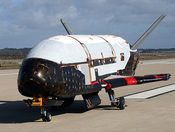

 RSS Feed
RSS Feed
